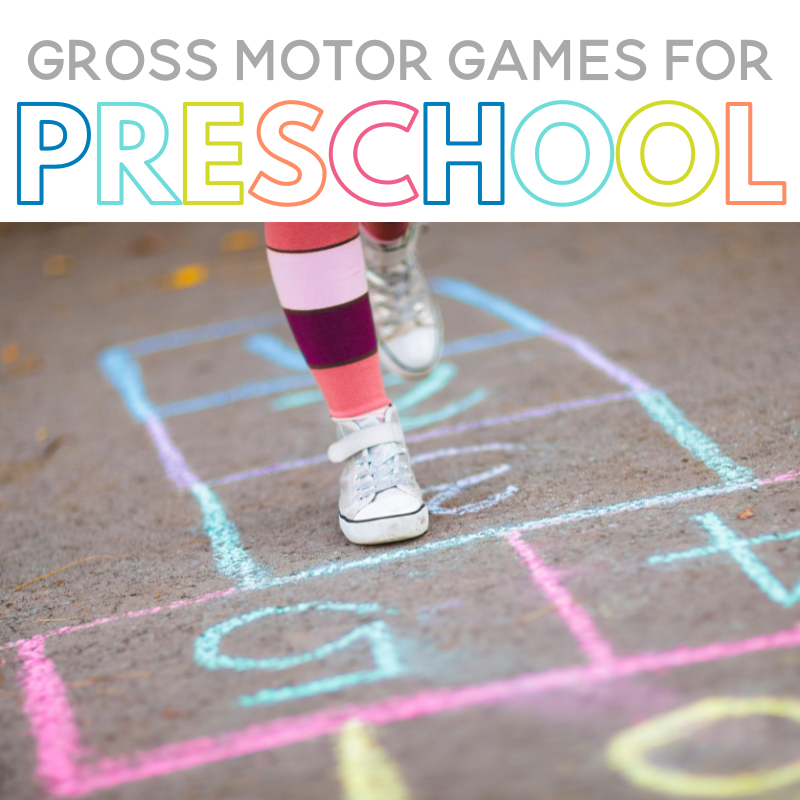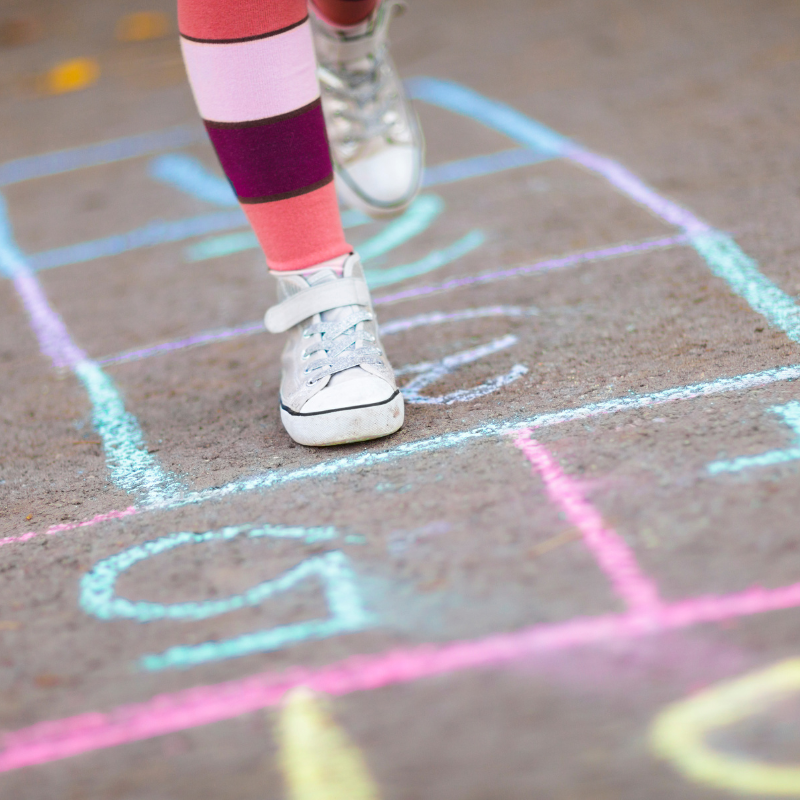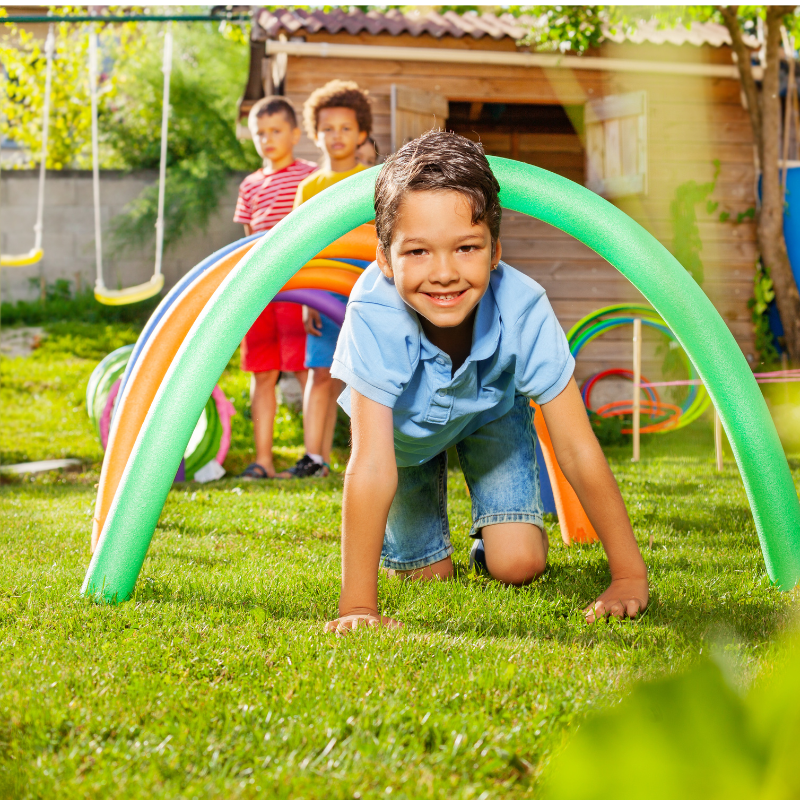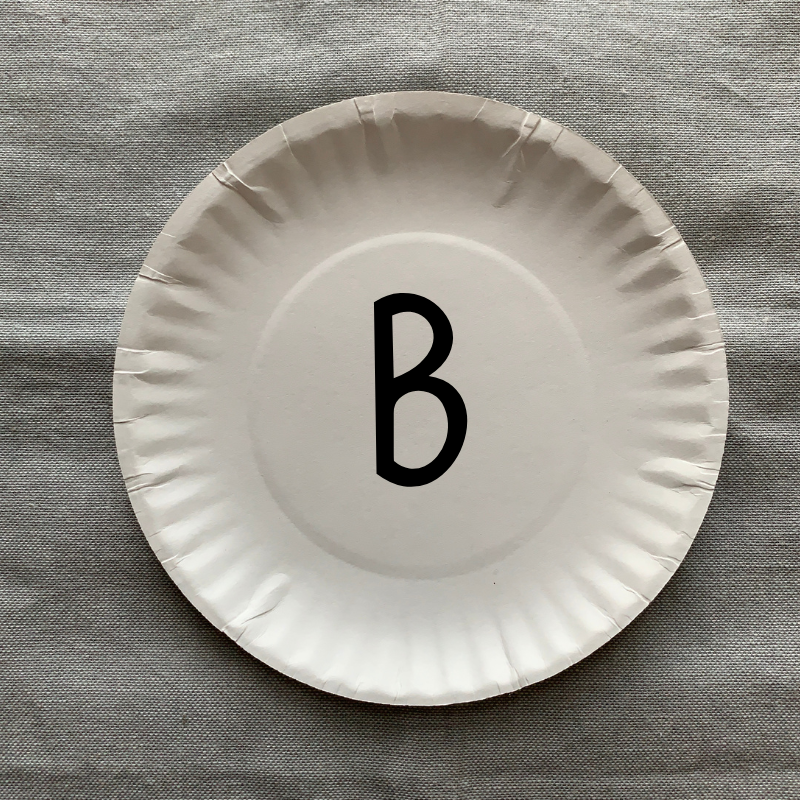Preschoolers are full of energy and love to move around. Engaging them in gross motor games not only helps them burn off some of that energy but also improves their physical skills. This post is dedicated to gross motor games for preschool students!

What are gross motor skills?
Gross motor skills refer to the ability to control and coordinate the large muscles in the body, such as those in the arms, legs, torso, and feet. These skills are essential for performing everyday movements and activities, such as walking, running, jumping, and throwing. Gross motor skills are developed through practice and experience and are important for physical, cognitive, and social development.
In early childhood, gross motor skills are a critical area of development, as they lay the foundation for physical fitness and overall health. As children grow and develop, they continue to refine their gross motor skills through activities like sports, dance, and other physical activities. Gross motor skills also play an important role in cognitive development, as research has shown that physical activity and movement can enhance brain function and improve academic performance.
Overall, gross motor skills are an essential aspect of human development and are important for a wide range of physical, cognitive, and social outcomes. Parents, caregivers, and educators can support the development of gross motor skills by providing opportunities for physical activity and play, and by encouraging children to engage in activities that challenge and develop their motor skills.
If you are looking to entertain younger children, check out this post: 25 Simple Toddler Play Ideas.
Why is gross motor development important?
One of the primary reasons that gross motor development is important is that it helps children build the physical skills they need to participate in everyday activities. For example, children who have strong gross motor skills are better able to navigate their environment, climb stairs, and perform basic self-care tasks like dressing and bathing. Additionally, gross motor development is critical for developing balance and coordination, which are key skills for playing sports, dancing, and engaging in other physical activities.
Beyond its practical benefits, gross motor development is also important for children’s overall health and well-being. Children who engage in regular physical activity are less likely to be overweight or obese and are at a lower risk for developing chronic health conditions like heart disease, diabetes, and certain types of cancer. Additionally, physical activity is important for improving mental health outcomes like reduced stress, anxiety, and depression.
Are fine motor activities different than gross motor activities?
Yes, they are different. Fine motor activities are focused on developing fine motor skills while gross motor activities are focused on developing gross motor skills.
Fine motor skills refer to the ability to control and coordinate small muscles in the hands and fingers, allowing individuals to perform precise movements and tasks. These skills involve the use of smaller muscle groups and require dexterity and hand-eye coordination.
Fine motor skills are essential for various everyday activities and tasks, including writing, drawing, buttoning clothes, using utensils, tying shoelaces, and manipulating small objects.
Gross Motor Benefits
Gross motor development can also have cognitive benefits for children. Studies have shown that children who are physically active tend to perform better in school, with improved attention, memory, and academic achievement. This may be due in part to the fact that physical activity promotes the development of new neural connections in the brain, which can enhance cognitive function.
Finally, gross motor development plays an important role in social and emotional development. Physical activity provides opportunities for children to interact with others and develop social skills like communication, cooperation, and teamwork. Additionally, physical activity can be a fun and enjoyable way for children to express themselves, build confidence, and develop a positive self-image.
Examples of Gross Motor Activities
Gross motor activities are those that involve the use of large muscle groups and whole body movement. These activities are important for children’s physical, cognitive, and social development, as they help children build strength, coordination, and confidence. There are many different types of gross motor activities that are appropriate for children of different ages and abilities. Here are a few common examples”
Outdoor Play
One common type of gross motor activity is outdoor play. This can include activities like running, jumping, climbing, and playing sports like soccer or basketball. Outdoor play provides children with opportunities to explore their environment, build their physical skills, and develop social skills like cooperation and teamwork. Most playground equipment like the jungle gym develop gross motor developmentt.
Dancing
Another type of gross motor activity is dancing. Dancing involves large movements of the body and can be a fun and enjoyable way for children to get exercise and express themselves creatively. Dancing can also help children develop coordination, rhythm, and balance.
Yoga and Other Forms of Exercise
Yoga and other forms of exercise can also be great gross motor activities for children. These activities help children build strength, balance, and flexibility, and can also improve concentration and focus. Many yoga classes for children are designed to be fun and engaging, with activities like animal poses or partner yoga. Many yoga videos created just for kids can be found online!
Finally, gross motor activities can also include activities like swimming, riding bikes, or playing on playground equipment. These activities help children develop their physical skills and confidence, and can also be a fun way to spend time with friends and family.
Gross Motor Games for Preschool
Gross motor games can benefit preschoolers in a number of ways. They can help children develop their physical abilities, including their coordination, balance, and strength. These games can also help children build social skills and confidence, as they learn to interact with others and take turns. Additionally, gross motor games can be a fun way for children to get exercise and stay active.
These games are split into two sections Indoor Gross Motor Activities and Outdoor Gross Motor Activities. However, many of these activities can be changed or altered to be enjoyed indoors or outdoors.
Outdoor Gross Motor Activities and Games
Looking for fun gross motor games for preschool students that can be played outside? Young children will love these different ideas!
Hopscotch
Hopscotch is a fun game that can be personalized for your preschoolers! Simply use sidewalk chalk to draw a hopscotch grid. This can be done using a sidewalk or driveway. Inside each square, you can write a letter, number, or even a word. Children will say each letter, number, or word as they hop into that square!

You can read more about fun counting activities for preschoolers in this post, 12 Counting Activities to Teach Numbers 1-10.
Obstacle Course
Set up an obstacle course using items like cones, hula hoops, and tunnels for a fun activity! Have the preschoolers crawl under the tunnels, jump over the cones, and hop through the hula hoops. Time them with a stopwatch to see who can complete the course the fastest or have them race against each other.
This game not only improves their gross motor skills but also their coordination and balance. Obstacles courses can be as simple or complex as you like, depending on the objects you use! Cardboard boxes and pool noodles can also make fun additions to the obstacle course too.

Red Light, Green Light
Red Light, Green Light is a classic children’s game that is easy to play and requires no equipment. To play, choose one player to be the “stoplight” and have them stand at the front of the playing area, facing away from the other players. The other players should line up several feet behind the stoplight.
To start the game, the stoplight calls out “green light!” and the other players start moving towards the stoplight. Players can walk, run, skip, or hop, but they must stop immediately when the stoplight calls out “red light!” If a player is caught moving after the stoplight says “red light,” they must return to the starting line.
The stoplight continues to call out “green light” and “red light” until one of the players reaches and tags the stoplight. That player becomes the new stoplight, and the game starts over.
To make the game more challenging, you can add variations like “yellow light,” where players must move very slowly, or “purple light,” where players must move backward. You can also adjust the distance between the players and the stoplight to make the game more or less challenging.
Bean Bag Toss
Bean bag toss is an excellent outdoor gross motor game for preschoolers as it provides a fun and engaging way to develop their physical skills. This is a great option for little kids because there aren’t really any rules to the game. The act of throwing the bean bags helps children enhance their hand-eye coordination, balance, and muscle strength. You can use paper plates as targets for students to aim at or even make boxes on the group with painter’s tape or
Soccer Ball Kick
Set up a small soccer goal or use cones to create a makeshift goal. Have your preschooler practice kicking a soccer ball into the goal from different distances. You can also set up a small obstacle course using cones for them to dribble the ball through before taking a shot. Other ball games can be played to promote gross motor movement too!
Duck Duck Goose
Duck Duck Goose is a classic game that preschoolers love. Have the children sit in a circle and choose one child to be the “goose.” The goose walks around the circle tapping each child on the head saying “duck, duck, duck…” until they tap one child and say “goose!” The goose then runs around the circle trying to tag the child they tapped before they can make it back to the goose’s spot. This game improves gross motor skills like running, tagging, and dodging while also promoting social skills like taking turns and following rules.
Ring Toss
Create a ring toss game using hula hoops or rings of different sizes. Place them at varying distances and have the children throw bean bags or soft balls to try and land them inside the rings. This activity enhances hand-eye coordination, aiming skills, and throwing accuracy too!
Parachute Play
What’s more fun for little ones than playing with a parachute? There are so many different fun activities to do with a parachute! Start with a large parachute and have the children hold onto the edges. Shake the parachute up and down, creating waves, or have them run underneath while it’s held up. You can also add balls to the parachute for kids to bounce in the air.
Indoor Gross Motor Activities
Rainy days happen and sometimes you can be confined to indoor spaces. This list of indoor gross motor activities will keep preschoolers active and engaged indoors! These activities are not only a fantastic way to keep energetic little ones moving but also provide numerous benefits for their physical and cognitive development.
From scavenger hunts to balloon games, there is a wide range of creative and exciting options that can be enjoyed within the comfort of indoor spaces. So, let’s dive into indoor gross motor activities and discover how they can keep preschoolers active, entertained, and thriving even on those rainy days.
Paper Plate Name Scavenger Hunt
A scavenger hunt is a great way to get your preschooler moving while also engaging their problem-solving skills. On a rainy day, a paper plate name scavenger hunt is a great activity! Just write one letter of the child’s name on a paper plate then hide them in different places around the home. Preschoolers will find each plate and put them in order to spell their name!

You can use paper plates as a resource in many gross motor games for preschool!
Animals Walk
Get your preschoolers moving like animals with this fun gross motor game. Have them walk like a bear, hop like a bunny, crawl like a crab, and slither like a snake. You can even add in some animal sounds to make it more fun. Here are a few examples to get you started:
Animal walks are a fun and engaging way for preschoolers to explore different movements and improve their gross motor skills. Here are some examples of animal walks that you can incorporate into your activities:
- Bear Walk: Encourage preschoolers to walk on all fours with their hands and feet flat on the ground, imitating the movements of a bear. They can take slow, deliberate steps, focusing on maintaining balance and coordination.
- Crab Walk: Have children sit on the floor, then lift their bodies off the ground, supporting themselves with their hands and feet. They can move backward or sideways, imitating the sideways scuttle of a crab. This exercise strengthens their upper body and core muscles.
- Frog Jumps: Instruct preschoolers to crouch down, place their hands on the floor, and then jump forward, landing with their knees bent and hands touching the ground. They can repeat this motion, hopping like frogs. This activity helps develop leg strength and coordination.
- Penguin Waddle: Encourage children to take short, waddling steps with their feet close together, imitating the movement of a penguin. They can extend their arms to the sides for balance. This walk promotes stability and coordination.
- Bunny Hops: Instruct preschoolers to crouch down and place their hands on the floor, then hop forward using both feet together, keeping their knees bent. They can repeat this motion, mimicking the hopping movements of a bunny. This activity enhances leg strength and coordination.
- Snake Slither: Have children lie on their stomachs and move forward by pushing off the ground with their hands and dragging their bodies along the floor, imitating the slithering motion of a snake. This exercise helps develop upper body strength and coordination.
- Duck Waddle: Encourage children to walk with their feet turned outward and their knees slightly bent, imitating the waddling movement of a duck. They can flap their arms like wings for added fun. This walk improves balance and coordination.
Remember to demonstrate and encourage proper form during these animal walks to ensure children engage in the movements safely. Additionally, you can incorporate imaginative play by asking children to make sounds or act out characteristics of the animals they are imitating. Animal walks provide an enjoyable way for preschoolers to explore different movements, build strength, and coordination, and have a wild time while doing so!
Balloon Volleyball
Balloon Volleyball is a simple game that can be played indoors or outdoors. All you need is a balloon and painter’s tape to create a net. Divide the children into two teams or pairs to play one on one; and have them stand on either side of the net. The goal is to keep the balloon in the air and prevent it from touching the ground on the other side of the net. This game helps improve hand-eye coordination, gross motor skills, and teamwork. Plus, it’s a great way to burn off some energy!
Simon Says
Simon Says is a classic game that can be adapted to include gross motor movements. The leader, or “Simon,” gives commands such as “Simon says jump up and down” or “Simon says touch your toes.” The players must only follow the commands that start with “Simon says.” If they follow a command without “Simon says,” they are out.
This game helps improve listening skills, following directions, body awareness, and gross motor skills. Plus, it’s a lot of fun for preschoolers and it requires no equipment and can be played anywhere!
Freeze Dance
Freeze dance is a fun game that gets preschoolers moving and grooving. Play some upbeat music and have the children dance around. When the music stops, they must freeze in whatever position they are in. If they move after the music stops, they are out. This gross motor game for preschool is easy and helps improve listening skills, following directions, and gross motor skills.
Dance Party
A simple dance party can be a great way for children to use up some excess energy! Turn on some lively music and have a dance party. Encourage the children to move and groove, imitate dance moves, and explore different ways of moving their bodies. This can also be a simple way to give students a break between classroom activities.
Limbo
Use a broomstick as the limbo bar. Children can take turns trying to bend backward and pass under the bar without touching it. Lower the bar gradually to increase the difficulty.
These indoor gross motor games provide opportunities for children to engage in physical activity, and develop their coordination, balance, and gross motor skills while having a great time indoors. Remember to ensure the safety of the playing area and adapt the games based on the available space and resources
Gross Motor Games for Preschool
In conclusion, engaging preschoolers in gross motor games is a fantastic way to foster their physical development, enhance their coordination, and promote an active and healthy lifestyle.
These games provide opportunities for children to refine their motor skills, balance, agility, and body control while having fun and building confidence. Whether it’s through obstacle courses, dance parties, or free play, preschoolers benefit from the physical challenges and opportunities for social interaction that these games offer. I hope your little ones love these gross motor games for preschool!
